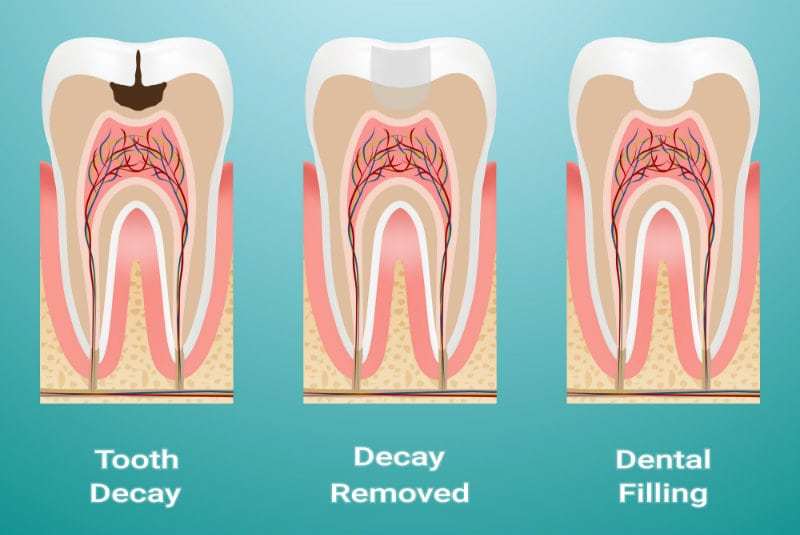1. Examination and Diagnosis :-
The dentist will visually examine the tooth and may take X-rays to evaluate the extent of the decay or damage. They will determine if a composite restoration is the appropriate treatment option.
2. Anesthesia :-
If necessary, the dentist will administer local anesthesia to numb the area around the affected tooth. This ensures that you don't experience any pain or discomfort during the procedure.
3. Tooth Preparation :-
The dentist will use a dental drill, air abrasion, or laser to remove the decayed or damaged portion of the tooth. The tooth is shaped and prepared to create space for the composite filling material.
4. Etching and Bonding :-
The dentist will apply a mild acidic solution to the prepared tooth surface. This etching gel helps create a microscopically rough surface, which enhances the bond between the tooth and the composite material. After etching, the tooth is rinsed and dried, and a bonding agent is applied to the tooth.
5. Composite Placement :-
The dentist will layer the tooth-colored composite resin material onto the prepared tooth surface. The material is carefully shaped and molded to match the natural contours of the tooth. Different shades of composite may be used to achieve a more natural appearance.
6. Curing :-
Once the composite material is in place, the dentist will use a special curing light to harden or "cure" it. The light activates a chemical reaction in the composite material, causing it to harden within seconds.
7. Shaping and Polishing :-
After the composite material has hardened, the dentist will trim and shape it to achieve the desired shape and bite. They will also use polishing instruments to smooth the surface of the filling, making it blend seamlessly with the surrounding tooth structure.
8. Final Evaluation and Instructions :-
Once the restoration is complete, the dentist will evaluate the final result and make sure it meets your expectations. They will provide instructions on oral care and hygiene practices to maintain the longevity of the composite restoration.
